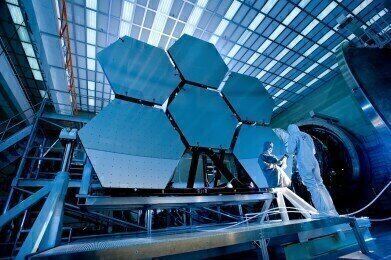Bioanalytical
The 9 Instruments that NASA Selected for its Europa Mission
Jul 07 2015
Back in 1993, the Galileo spacecraft was sent into orbit around the planet Jupiter for a period of eight years. When it returned with its findings over a decade ago, scientists at NASA were particularly struck by the existence of a moon dubbed Europa. This moon appeared to contain a vast liquid ocean beneath the surface of its icy crust. As such, it has been deemed the best chance of a habitable location in our solar system.
Talk of a mission to the moon has been ongoing since the Galileo’s return. Now, NASA have taken a major leap in planning for that mission by selecting the nine instruments that the mission will carry in order to try and determine whether or not life does or could exist on its environs.
The Proposed Mission
The mission is scheduled to take place sometime in the 2020s, and will consist of a solar-powered spacecraft which will lock into Jupiter’s orbit and perform a series of fly-by analyses on Europa. Over three years, the mission is expected to perform up to 45 fly-bys, which would take place at a distance of anywhere between 16 miles to 1,700 miles.
NASA initially asked for $30 million to be set aside by Congress for the mission the fiscal budget of 2016. Contrary to expectations, the House Appropriations Committee offered NASA a whopping $140 million instead – but demanded that the project be hurried along. Congress wants the mission to be launched no later than 2022, which may or may not be realistic, according to Curt Niebur, a programme scientist on the Europa project.
“They could be ready in the early 2020s,” explained Niebur, referring to the nine chosen instruments. “But that’s also dependent upon how much money is in the budget for us to give them for that work.” He went on to say he expects NASA to spend $10 million on the instruments in the coming year and a further $110 million over the next three years.
The Chosen Nine
Proposals for the instrumentation to take on board the Europa Clipper were sent to NASA last year. Of these, 33 were reviewed by the Europa panel and a shortlist of nine was finally drawn up. They are as follows:
- Europa Imaging System (EIS). These wide and narrow-angled cameras will be capable of providing videos mapping the surface of the moon at 50m resolution, and photographs up to 10 times that.
- Plasma Instrument for Magnetic Sounding (PIMS). By monitoring the magnetic inductions signals caused by the plasma currents around the moon, this instrument will be able to identify the thickness of the icy shell and the depth and salinity of the ocean itself.
- Interior Characterisation of Europa Using Magnetometry (ICEMAG). As well as monitoring the magnetic field of Europa, this machine will work in tandem with the PIMS to work out the depth and salinity of the ocean.
- Mapping Imaging Spectrometer for Europa (MISE). This tool will identify the distribution of acid hydrates, salts, organic compounds, water ice phases and other substances to give a better idea of Europa’s constitution.
- Radar for Europa Assessment and Sounding: Ocean to Near-Surface (REASON). This radar will detect undulations in the icy shell of the moon, thus shedding a light on its hidden structure and the potential size of the water beneath.
- Europa Thermal Emission Imaging System (E-THEMIS). Using thermal imaging, this detector will attempt to pinpoint potential ventilation sites where plumes of water may be ejected into space for analysis.
- Mass Spectrometer for Planetary Exploration/Europa (MASPEX). Mass spectrometry has long been a useful tool in NASA missions – in this particular one, it will analyse any material ejected into space and attempt to identify the compositional makeup of the ocean and surface core.
- Surface Dust Mass Analyser (SUDA). By capturing any small, solid particles ejected from the vents of the icy crust, this tool will enable scientists to directly analyse the samples.
- Ultraviolet Spectrograph/Europa (UVS). The spectrograph will investigate Europa’s atmosphere and detect smaller plumes of water, if necessary.
Digital Edition
Chromatography Today - Buyers' Guide 2022
October 2023
In This Edition Modern & Practical Applications - Accelerating ADC Development with Mass Spectrometry - Implementing High-Resolution Ion Mobility into Peptide Mapping Workflows Chromatogr...
View all digital editions
Events
Apr 23 2024 Kintex, South Korea
Apr 23 2024 Seoul, South Korea
Apr 28 2024 Montreal, Quebec, Canada
May 05 2024 Seville, Spain
May 15 2024 Birmingham, UK














